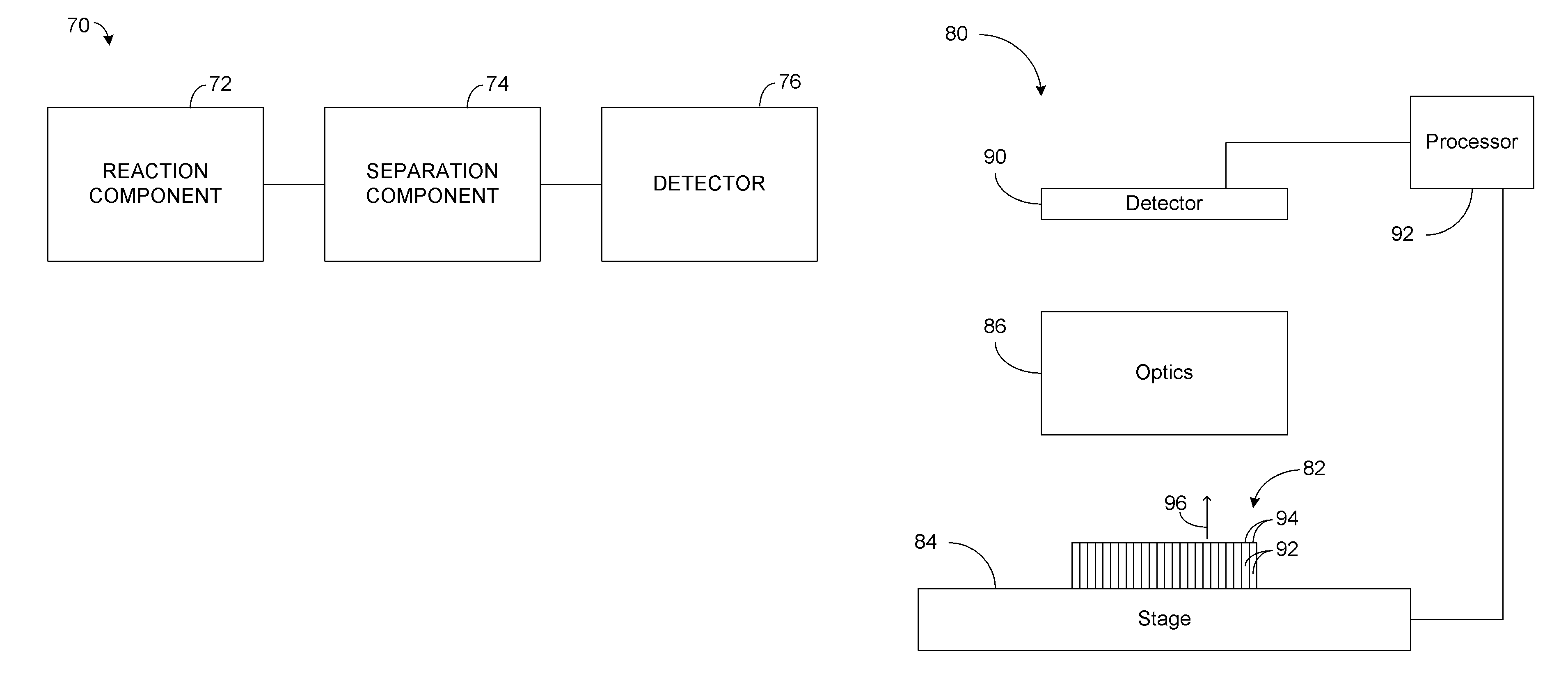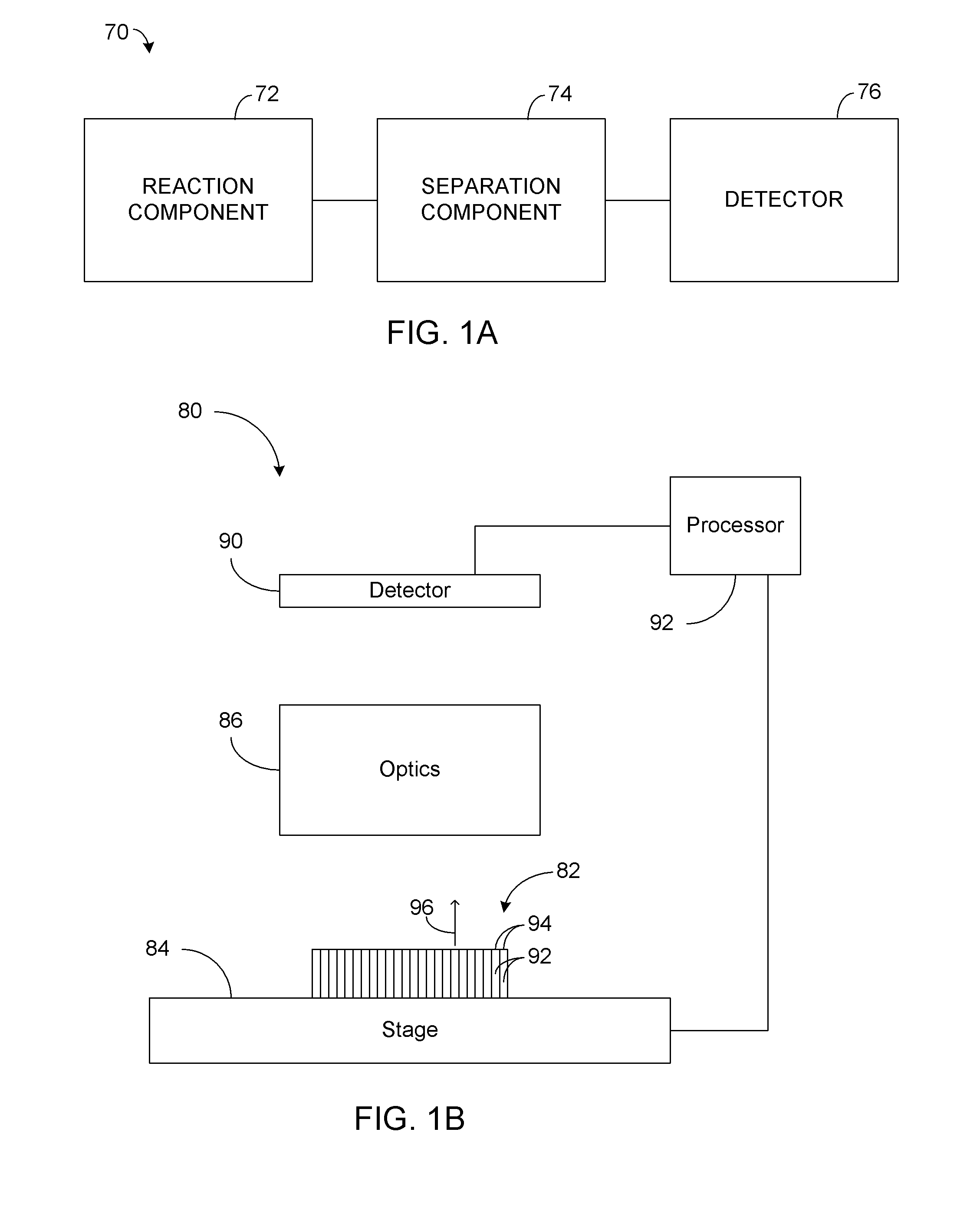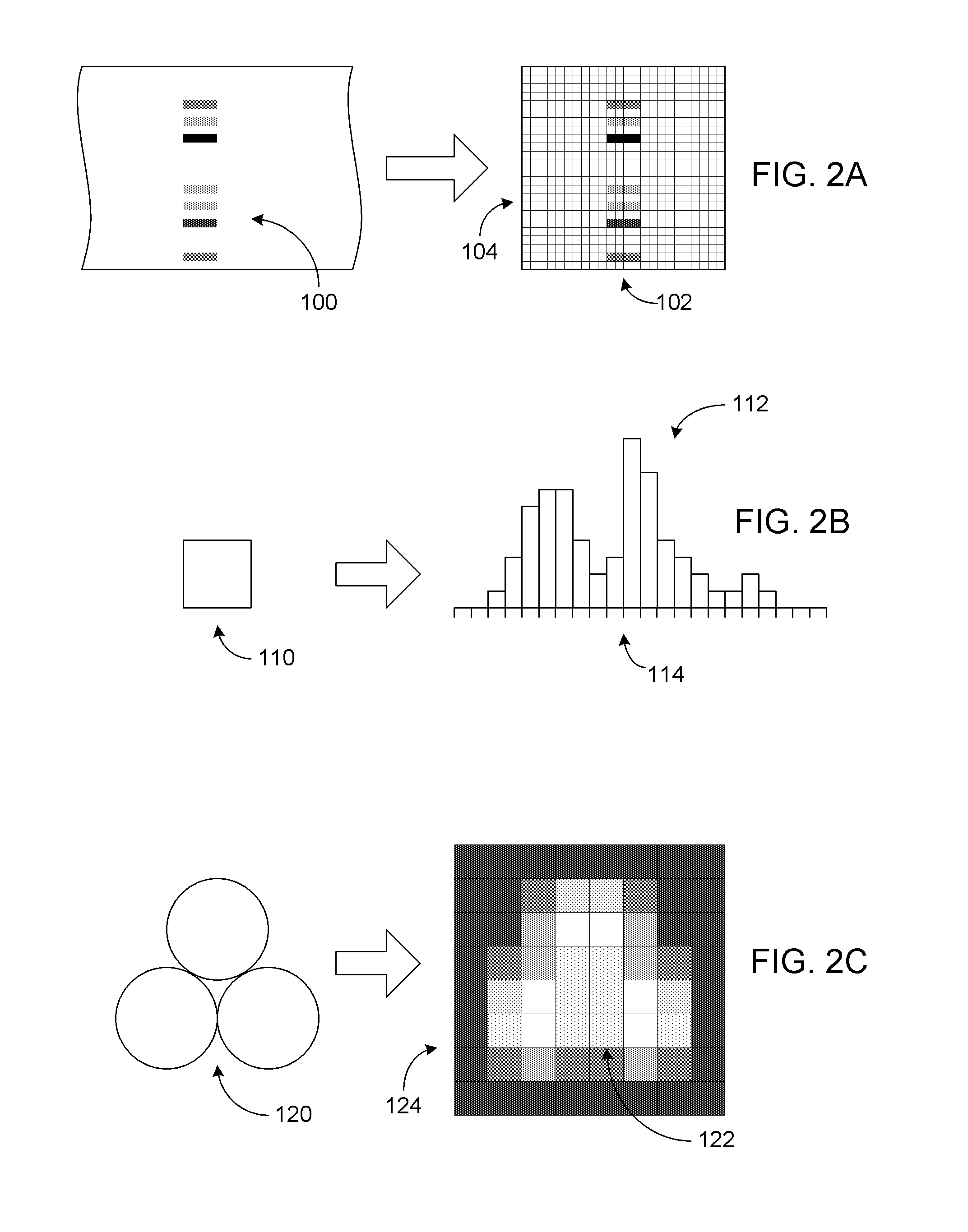Image enhancement by sub-pixel imaging
a sub-pixel imaging and image enhancement technology, applied in image enhancement, instruments, investigating moving fluids/granular solids, etc., can solve problems such as difficulties in signal analysis, and achieve the effect of improving the effective resolution of signal detection
- Summary
- Abstract
- Description
- Claims
- Application Information
AI Technical Summary
Benefits of technology
Problems solved by technology
Method used
Image
Examples
Embodiment Construction
[0032]These and other aspects, advantages, and novel features of the present teachings will become apparent upon reading the following detailed description and upon reference to the accompanying drawings. In the drawings, similar elements have similar reference numerals.
[0033]FIG. 1A illustrates an exemplary schematic diagram for a biological analyzer 70 capable of sequence determination or fragment analysis for nucleic acid samples. In various embodiments, the analyzer 70 may comprise one or more components or devices that are used for labeling and identification of the sample and may provide means for performing automated sequence analysis. The various components of the analyzer 70, described in greater detail hereinbelow, may comprise separate components or a singular integrated system. The present teachings may be applied to both automatic and semi-automatic sequence analysis systems as well as to methodologies wherein some of the sequence analysis operations are manually perfor...
PUM
 Login to View More
Login to View More Abstract
Description
Claims
Application Information
 Login to View More
Login to View More - R&D
- Intellectual Property
- Life Sciences
- Materials
- Tech Scout
- Unparalleled Data Quality
- Higher Quality Content
- 60% Fewer Hallucinations
Browse by: Latest US Patents, China's latest patents, Technical Efficacy Thesaurus, Application Domain, Technology Topic, Popular Technical Reports.
© 2025 PatSnap. All rights reserved.Legal|Privacy policy|Modern Slavery Act Transparency Statement|Sitemap|About US| Contact US: help@patsnap.com



